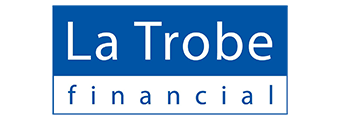Compare SMSF home loan interest rates
Finding your dream property can be difficult, but choosing a lender can be even harder. If you are struggling to choose the right type of SMSF home loan or select a lender, Comparesmsfhomeloans.com.au is here to help. We have provided you with all the educational resources and comparison tables needed to make an informed decision and choose a SMSF home loan that is right for you.
Lender | |||||||||||||
|---|---|---|---|---|---|---|---|---|---|---|---|---|---|
| Variable | N/A | More details | |||||||||||
| FEATURED | |||||||||||||
loans.com.au – Variable SMSF Loan P&I <70% | |||||||||||||
| Variable | More details | ||||||||||||
| FEATUREDSelf Managed Super Fund Loan | loans.com.au – Variable SMSF Loan P&I <80%
| ||||||||||||
loans.com.au – Variable SMSF Loan P&I <80%
| |||||||||||||
| Variable | More details | ||||||||||||
La Trobe Financial – SMSF Residential
| |||||||||||||
La Trobe Financial – SMSF Residential
| |||||||||||||
| Variable | More details | ||||||||||||
Freedom Lend – SMSF Variable Offset IO 70%
| |||||||||||||
Freedom Lend – SMSF Variable Offset IO 70%
| |||||||||||||
Base criteria of: a $400,000 loan amount, variable, fixed, principal and interest (P&I) home loans with an LVR (loan-to-value) ratio of at least 80%. However, the ‘Compare Home Loans’ table allows for calculations to be made on variables as selected and input by the user. Some products will be marked as promoted, featured or sponsored and may appear prominently in the tables regardless of their attributes. All products will list the LVR with the product and rate which are clearly published on the product provider’s website. Monthly repayments, once the base criteria are altered by the user, will be based on the selected products’ advertised rates and determined by the loan amount, repayment type, loan term and LVR as input by the user/you. *The Comparison rate is based on a $150,000 loan over 25 years. Warning: this comparison rate is true only for this example and may not include all fees and charges. Different terms, fees or other loan amounts might result in a different comparison rate. Rates correct as of March 18, 2025. View disclaimer.
Powered by:
 Savings.com.au
Savings.com.au
Savings.com.au Pty Ltd ACN 161 358 363 | Australian Financial Services Licence and Australian Credit Licence 515843
About SMSF
What is SMSF and how does an LRBA work?
SMSF stands for “Self-Managed Super Fund” and is an alternative way to save money for retirement. The main difference between an SMSF and other types of funds is that the members, or beneficiaries, of an SMSF are usually also the trustees. This means that the members of the SMSF themselves run it for their own benefit and are responsible for complying with the super fund’s governing rules and taxation laws surrounding SMSFs.
In 2007, the Superannuation Industry (Supervision) Act 1993 (Cth) (“SIS Act”) was amended to allow superannuation funds to borrow money to purchase assets. This is called an LRBA and stands for Limited Recourse Borrowing Arrangement. The SIS Act permits an SMSF to borrow or maintain a borrowing provided that the:
- borrowed funds are applied to acquire a ‘single acquirable asset’ (including refinancing of an existing compliant loan);
- asset is held on trust for the SMSF, so that the SMSF acquires a beneficial interest in the asset and the trustee holds the legal title to the asset. The trust relationship between the SMSF and the trustee is set out in a property trust deed (which may also be referred to as a bare trust deed or a custodian deed);
- SMSF acquires the legal title to the asset by making one or more payments – i.e. by repaying the lender’s loan;
- right of the lender and others to recover the loan in the event of default is limited to the asset; and
- asset is not subject to any further charge or encumbrance.
Questions to consider before setting up a SMSF
Setting up an SMSF is an attractive way to take control of your super funds. By utilising an SMSF, you as the members have the right to make your own investment decisions for the fund and you are responsible for complying with super and tax laws.
An SMSF must be run for the sole purpose of providing retirement benefits for the members or their dependents. Additionally, all decisions you make as trustee of your SMSF must be in the best financial interest of the members. An SMSF does not permit you to access your super early and it cannot be utilised to buy major assets such as property or artwork prematurely to retirement.
Any borrowers interested in utilising their SMSF to finance their home loans should obtain legal and financial advice from qualified industry experts to equip themselves with the skills and knowledge required to run an SMSF.
What assets are can you invest in using LRBA?
An LRBA permits an SMSF to acquire a “single acquirable asset”. This can be used to acquire any singular asset but is most commonly used to acquire real property or land.
How are SMSF’s taxed?
The income of the SMSF is generally taxed at a concessional rate of 15%. To be entitled to this rate, the SMSF needs to be a ‘complying fund’ and lodge its tax returns on a yearly basis and maintain compliance with super and taxation laws. For a non- complying fund, the rate is the highest marginal tax rate for each year that the fund is non-complying.
Capital gains tax and SMSF?
Capital gains tax is tax paid on the profit made selling major assets such as property. This is included as part of an individual or SMSF’s assessable income for a given financial year. If you purchase a house and then sell it at a profit, that profit margin is included as assessable income and taxed at the highest marginal tax rate applicable. In any financial year, capital net losses are offset against gains to decrease the amount of tax payable if applicable.
SMSF capital gains rules state that if you make a net capital gain over a certain financial year, this net gain will be included in your SMSF’s assessable income. Since SMSFs have a flat tax rate of 15%, CGT is given the same treatment.
However, complying SMSFs are entitled to a CGT discount of 1/3 if the asset to which the CGT applies had been owned for at least a year.
SMSF Home loans
Qualification criteria for SMSF loan
A financial institution will qualify an SMSF for an SMSF loan if it can meet certain requirements.
For the SMSF, the fund itself needs to comply with super and tax laws. This will involve providing an SMSF Trust Deed containing governing rules which are compliant with super laws and updating them as necessary.
To comply with LRBA requirements, the Bare Trust Deed will need to specify the asset being purchased and ensure that its establishment Deed provides all of the necessary requisite powers. This will include the authority to deal with the property, take instructions from the SMSF and bind the SMSF to agreements relevant to the acquisition of the asset.
What will banks/financial institutions use to assess my loan application?
A financial institution will need to assess both the SMSF’s financial capabilities and its compliance.
From a compliance perspective, the financial institution will need to examine all documents relating to the SMSF and the LRBA. This will include, at minimum, an executed SMSF Trust Deed, an executed Bare Trust Deed and an executed Contract of Sale for purchase matters. Any documented variations made to the SMSF must also be provided to ensure that the SMSF’s details are up to date and remain in compliance with super and taxation laws.
How much can the SMSF borrow to buy property?
This will be a matter for each lender’s credit criteria, however it is common for loans to be limited to 90% LVR.
How to buy property using SMSF?
The financial institution will need to examine all documents relating to the SMSF and the LRBA. This will include, at minimum, an executed SMSF Trust Deed, an executed Bare Trust Deed and an executed Contract of Sale. Any documented variations made to the SMSF must also be provided to ensure that the SMSF’s details are up to date and remain in compliance with super and taxation laws.
The asset being purchased should be recorded as the same on the Contract of Sale and the Bare Trust Deed since this will confirm that the loan is used to purchase the correct specific asset.
How to refinance your existing SMSF home loan?
The process is largely the same with purchase loan applications. However, no Contract of Sale will be applicable as the Bare Trust or Trustee will already be recorded as the registered proprietor for the asset. The financial institution will examine all trust documents and ensure that the Bare Trust Deed relates to the acquisition of the asset to be refinanced.
Base criteria of: a $400,000 loan amount, variable, fixed, principal and interest (P&I) home loans with an LVR (loan-to-value) ratio of at least 80%. However, the ‘Compare Home Loans’ table allows for calculations to be made on variables as selected and input by the user. All products will list the LVR with the product and rate which are clearly published on the Product Provider’s web site. Monthly repayments, once the base criteria are altered by the user, will be based on the selected products’ advertised rates and determined by the loan amount, repayment type, loan term and LVR as input by the user/you. *The Comparison rate is based on a $150,000 loan over 25 years. Warning: this comparison rate is true only for this example and may not include all fees and charges. Different terms, fees or other loan amounts might result in a different comparison rate. Rates correct as of 24 April 2025.
Powered by:
 Savings.com.au
Savings.com.au
Savings.com.au Pty Ltd ACN 161 358 363 | Australian Financial Services Licence and Australian Credit Licence 515843



